The best trail running shoes for men and women in 2025
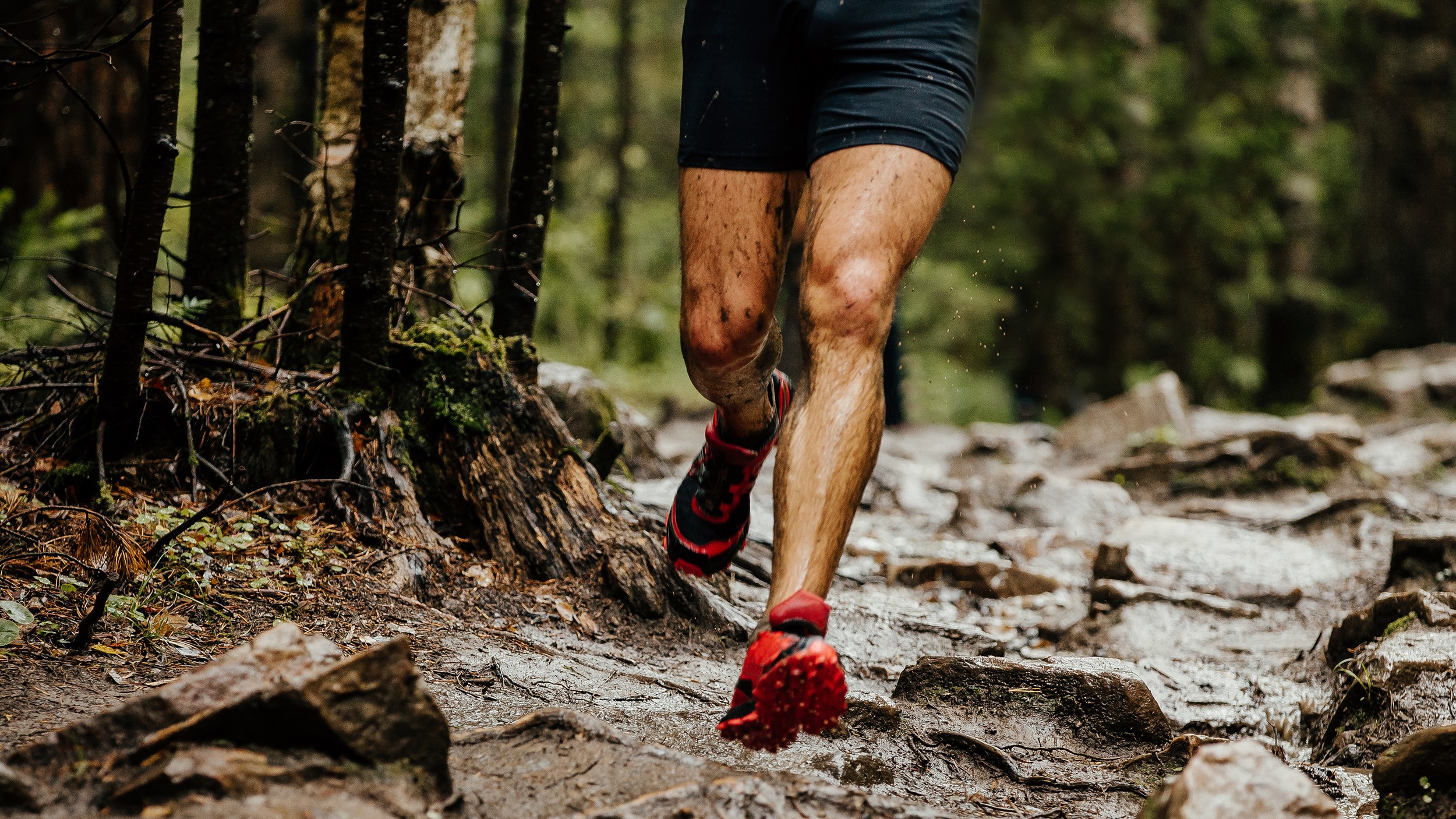
The best trail running shoes have more grip and support than standard running shoes for when you want to escape the city sidewalks and explore the trails instead. This improved grip helps as you make your way over uneven terrain, whether it’s rocks, gravel or grass you’re running on.
This extra grip and support sets them apart from many of the best running shoes, as those are generally designed with road and sidewalk runs in mind and focus more on packing in foam to cushion the impact of running. Trail shoes often have increased ankle protection and debris resistance too.
The trail shoe that’s best for you will depend a lot on the type of off-road terrain you’re running on — some are built for hard ground and some for soft. There are also all-terrain trail running shoes designed to work well on a wide range of terrain and some built to be comfortable on both road and trails, if you split your runs between the two.
If you’re not sure what trail shoe will suit you best, my overall top pick, the Hoka Speedgoat 6, is a safe choice because of its impressive versatility. It grips well on a wide variety of terrains and is comfortable and supportive for runs of any distance. If you’re looking for something more specialized, I’ve picked out several other exceptional trail shoes below, including some racing options and a great value shoe in the Merrell Morphlite.
The Quick List
Here's a run-through of the best trail running shoes available right now. You'll find more in-depth reviews of each shoe in the main guide below.

The Speedgoat 6 is my top pick overall because of its versatility. It grips well on almost any terrain, is comfortable over long distance and light enough for faster efforts, and will suit a wide range of runners well.
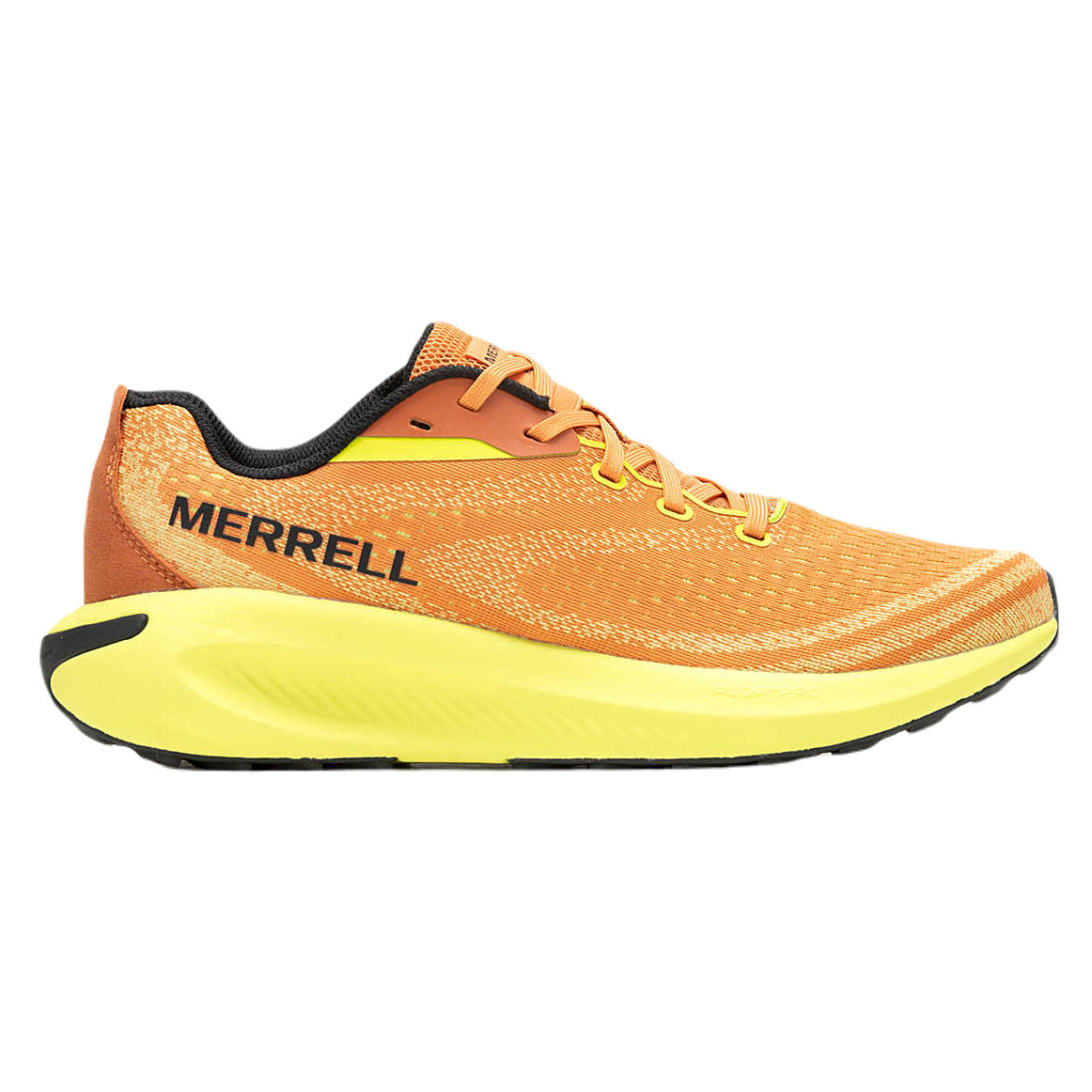
The Merrell Morphlite is a lightweight road-to-trail shoe that offers oustanding value at its MSRP, and is also often in sales in my experience. It's a good beginner trail option for light trails too.
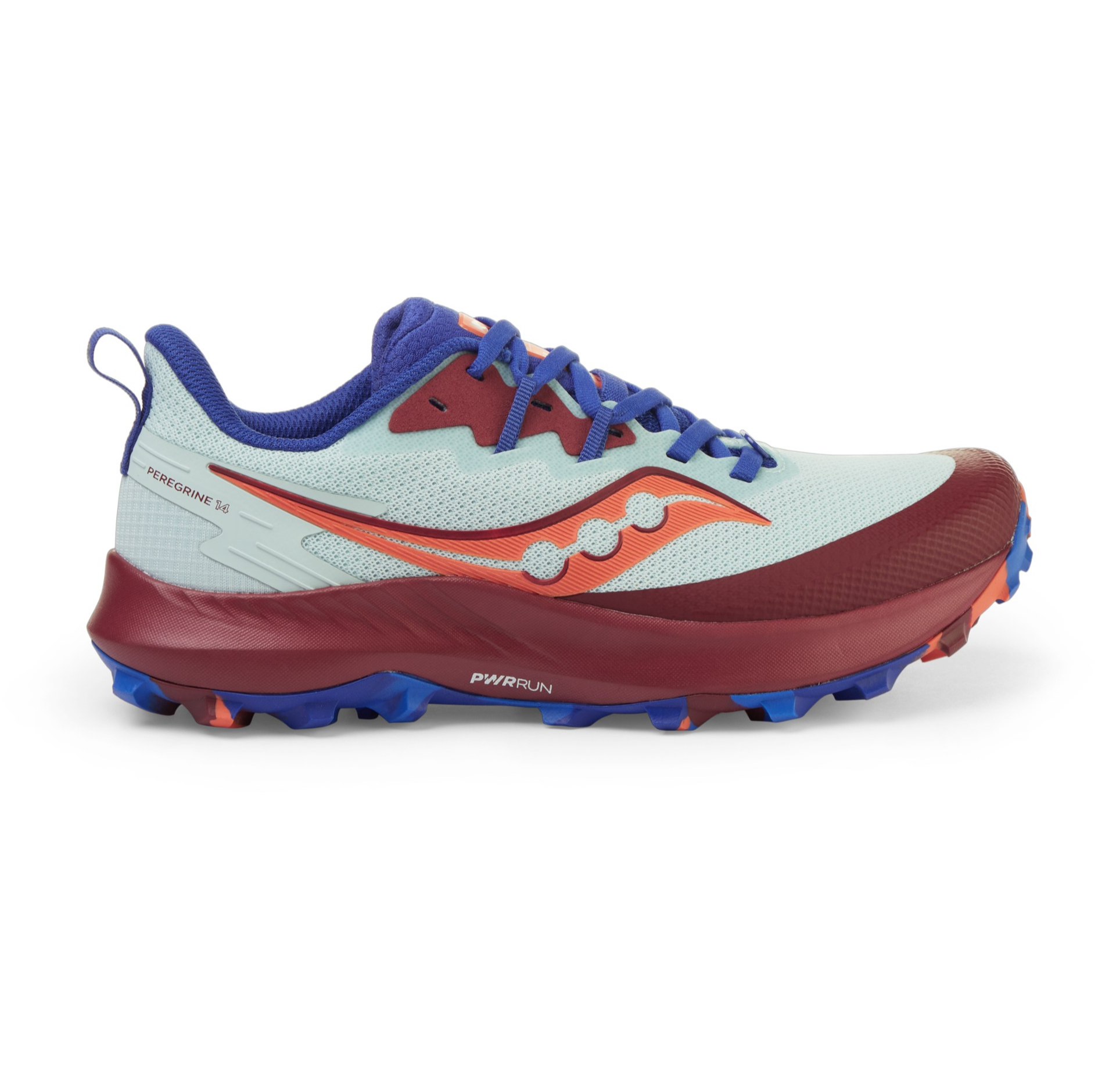
The outsole of the Saucony Peregrine 14 provides reliable grip on both soft and hard trails, as well as being comfortable for stints of road running as well. It's a rare all-terrain shoe that copes well with deep mud too.

The Hierro v9 is a trail shoe that has the comfort of a road running shoe thanks to its high midsole stack, and its outsole is designed to grip well on both roads and a mix of trails.
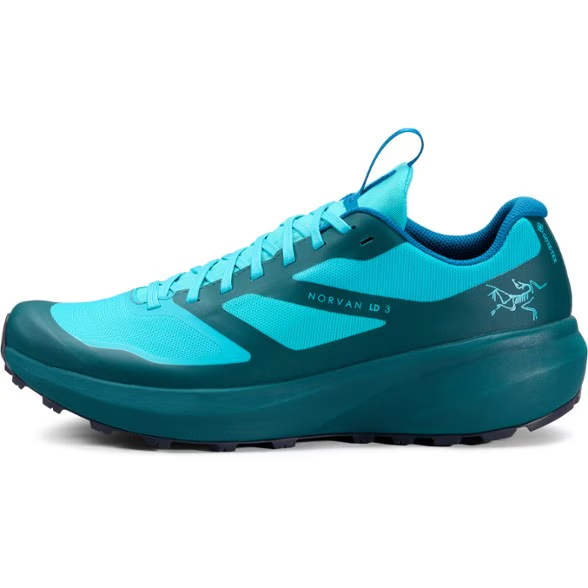
A waterproof trail shoe can significantly increase your enjoyment of runs in wet and cold conditions, and the Arc'teryx Norvan LD 3 GTX couples its Gore-Tex upper with a comfortable midsole and reliable Vibram outsole.

The Adidas Terrex Agravic Speed Ultra takes its cues from road racing shoes, with a high stack of bouncy foam and Adidas's EnergyRods running through that foam to add propulsion. It's a wild and very fast shoe for racing.
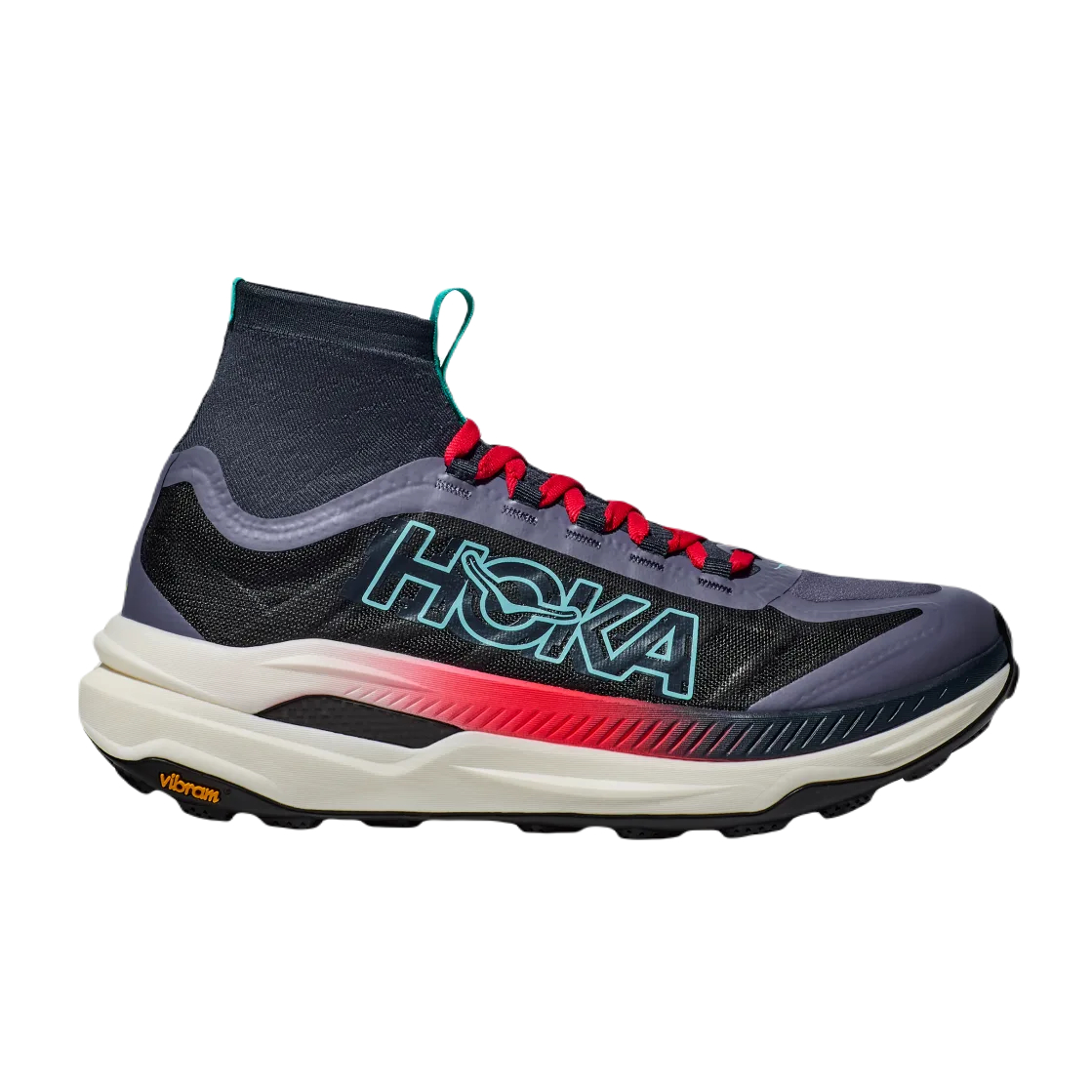
The high stack of bouncy foam and twin carbon plates in the midsole of the Hoka Tecton X3 are perfect for propelling you through your longest events, and helps to protect your legs on long runs, especially the downhill sections.
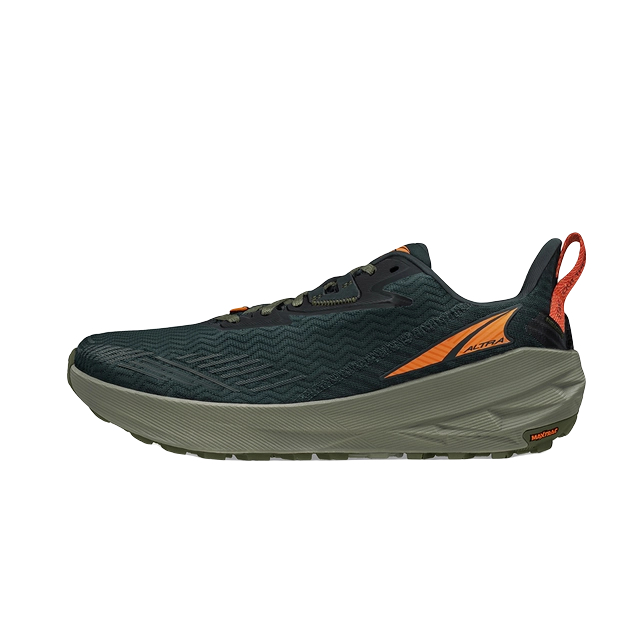
The foot-shaped toe-box on the Altra Experience Wild is accommodating for wider feet, since it doesn't taper as much in the forefoot as most shoes. The shoe is comfortable and has an outsole that grips well on most trails.

The 8mm lugs on the bottom of the Inov-8 Mudtalon Speed are ideal for biting into deep mud, and it's the perfect shoe for fell runs, obstacle course races or cross country runs on boggy ground.
The best trail running shoes available right now
Why you can trust Tom's Guide
Best trail running shoes overall
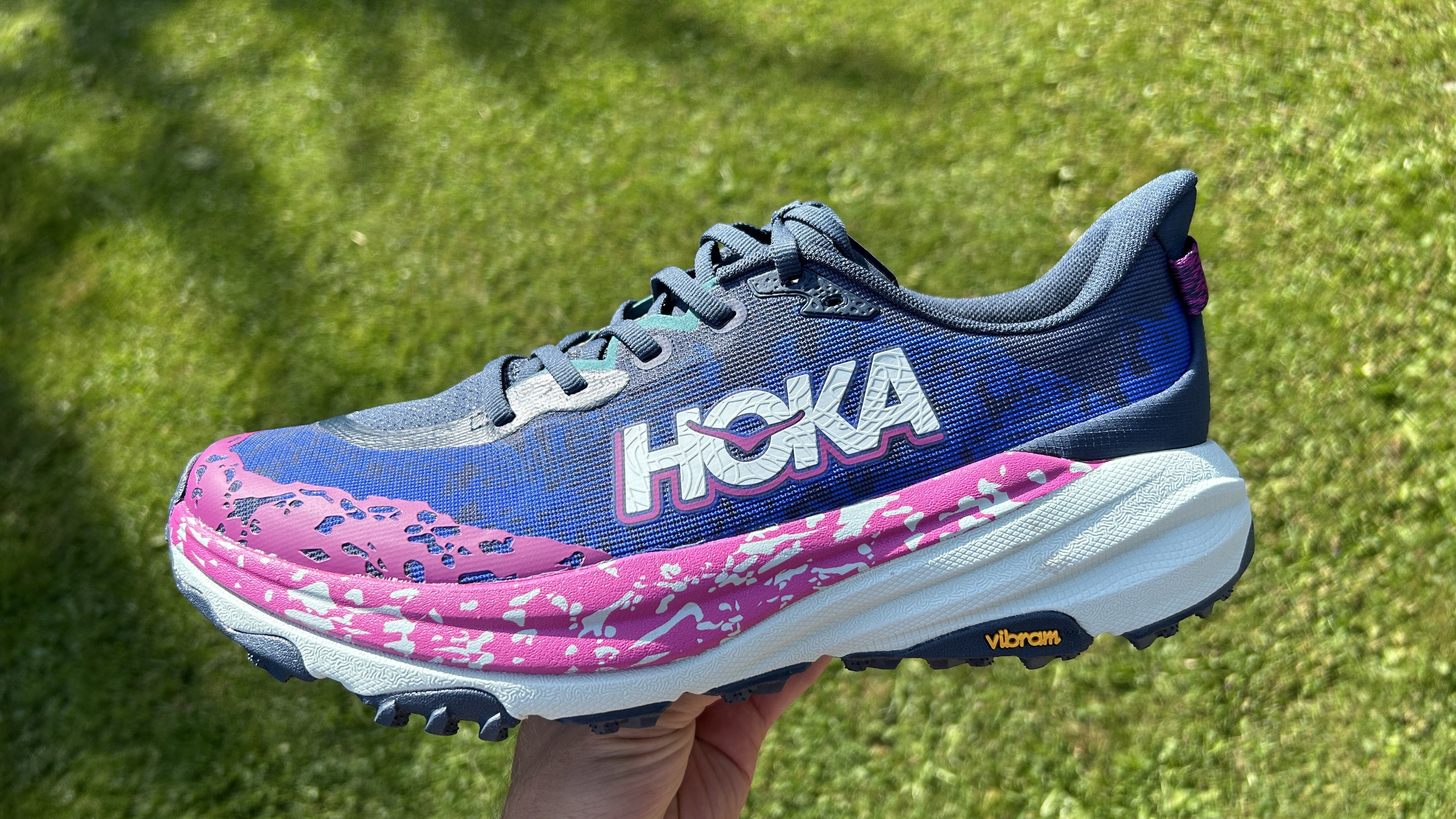
1. Hoka Speedgoat 6
Specifications
Reasons to buy
Reasons to avoid
The Hoka Speedgoat 5 was my top trail-running shoe pick last year, and the Hoka Speedgoat 6 duly takes its crown by virtue of some small but significant updates. The main one is that the midsole foam is a little lighter and more responsive, improving the ride of the shoe especially on firmer surfaces, and the lugs on the outsole have also been rejigged to deliver improved traction.
I’d still say the Speedgoat 5 is worth looking out for in sales, but the Speedgoat 6 is now the best trail-running shoe available overall because of its versatility. I’ve run on a wide range of terrains in the shoe, including rocky climbs, long grass, muddy hills and even extended stretches on the road and it has always gripped well and been comfortable underfoot.
It’s a shoe you could use for a short and speedy trail race as well as a multi-day ultramarathon, and the smooth ride from the rockered midsole will help the miles roll by no matter how far you’re going, or how fast. It’s also a good shoe for hiking, with the upper providing some valuable protection from rocks and roots, and a good amount of support around the ankle on uneven ground.
- Read our full Hoka Speedgoat 6 review
Best value trail running shoes
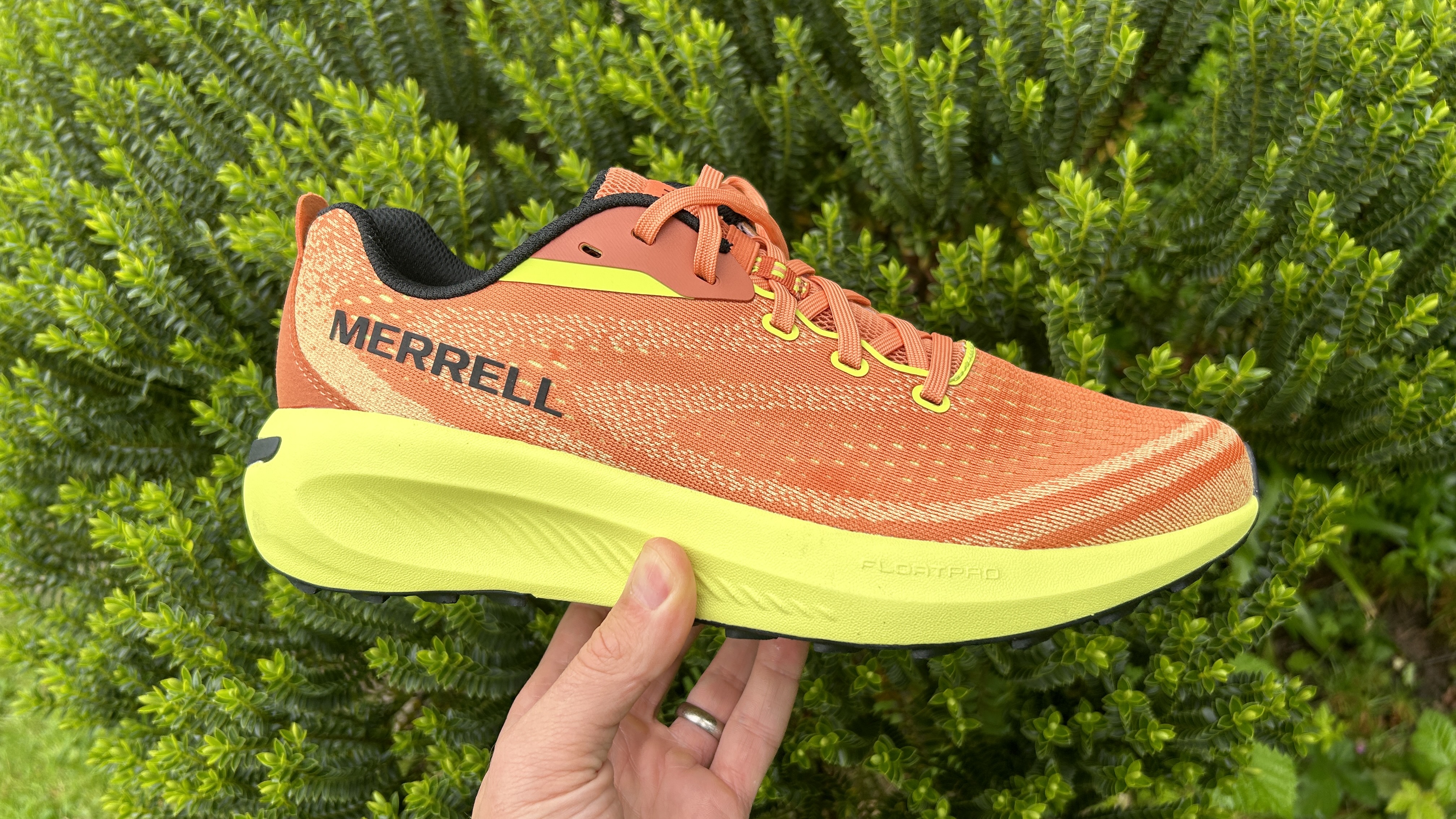
2. Merrell Morphlite
Specifications
Reasons to buy
Reasons to avoid
There aren’t many great trail shoes available for $100 and the Morphlite certainly stands out as an excellent option for those seeking a cheaper option. It is a comfortable shoe that’s built for light trails, with the 2-3mm lugs on the outsole not really offering enough grip if you hit mud or technical trails but providing more traction than road shoes for off-road runs on well-groomed paths.
I was impressed by the feel of the FloatPro Foam in the midsole, which is soft without being squishy or unstable, which wouldn’t be welcome on uneven ground. There’s some bounce to the foam too, and the Morphlite is a good budget trail-racing option, as well as a comfortable shoe for general runs.
There is not a full rubber outsole on the shoe, with some exposed foam in the midfoot, and I noticed that the shallow, broad lugs also seem to be wearing down a little quicker than others, so if you regularly run on gravel tracks in particular durability might be a concern with the Morphlite. However, that’s not enough to undermine its appeal as a cheap option for tamer trails, and it’s a good road-to-trail shoe as well.
Best all terrain trail running shoes
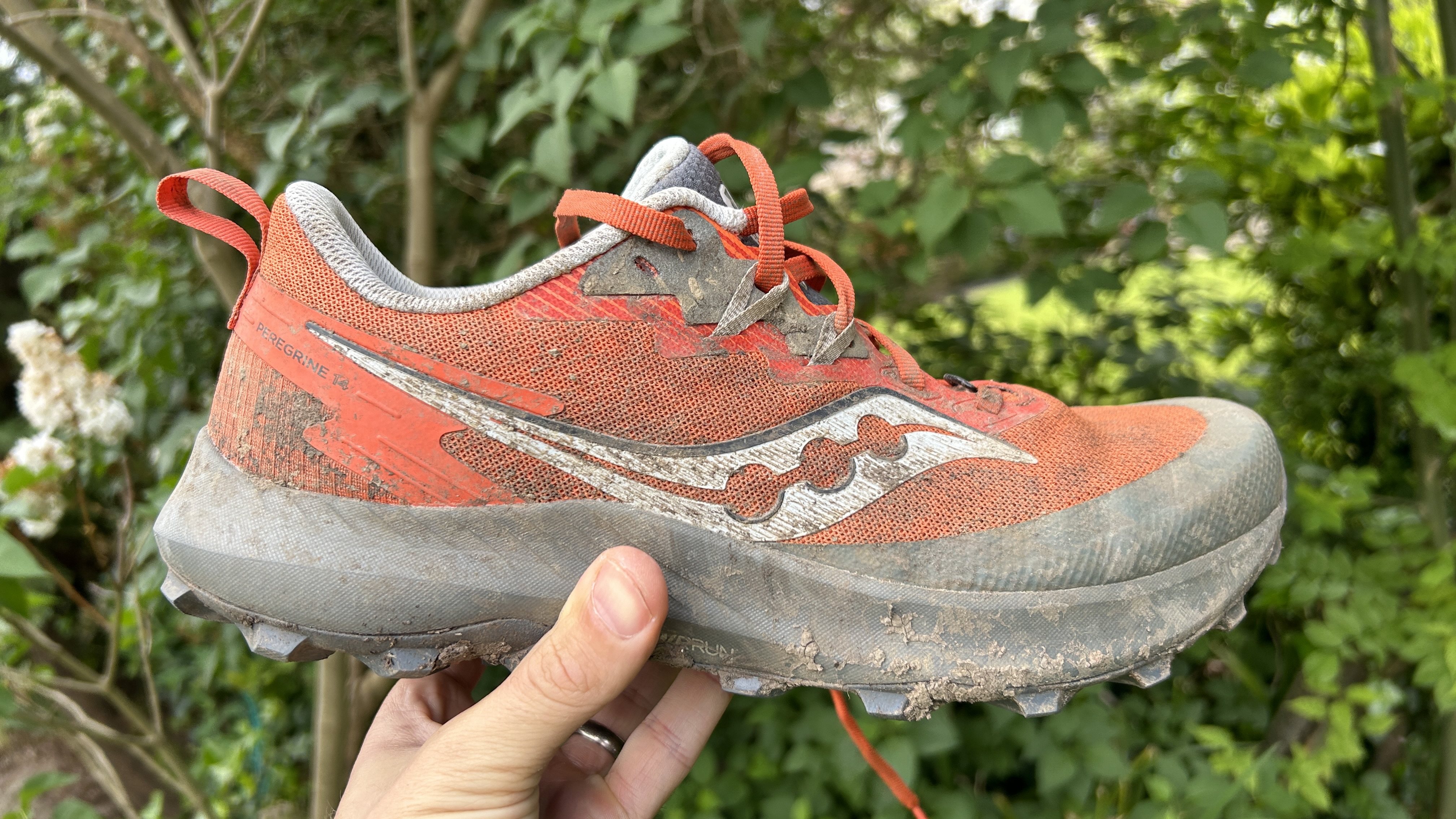
3. Saucony Peregrine 14
Specifications
Reasons to buy
Reasons to avoid
The Peregrine 14 is one of the most versatile trail running shoes available with regards to the terrains you can tackle in it, with the 5mm lugs on the PWRTRAC outsole providing reliable grip on almost every surface. I’ve been using the Peregrine for many years and each generation of the shoe has offered that all-terrain grip as a key feature, and I’ve run on hard and soft ground, road, mud and snow in the shoe without it coming unstuck.
It’s also a versatile shoe in terms of the distance and pace you can run in it. The Peregrine 14 is cushioned enough for long runs — though I’d prefer a bit more cushioning for ultramarathon distances myself — and it’s light enough to speed through short, fast runs as well. There’s also a GTX version of the shoe with a waterproof Gore-Tex upper, which is handy when running in cold and wet conditions.
The biggest problem with the Peregrine 14 is how similar it is to the Peregrine 13, with Saucony’s updates to the newer shoe being so minor that I didn’t notice a considerable difference on the run. That means that looking for a deal on the older shoe would be a smart bit of shopping while stocks of the 13 last.
Best road to trail running shoes
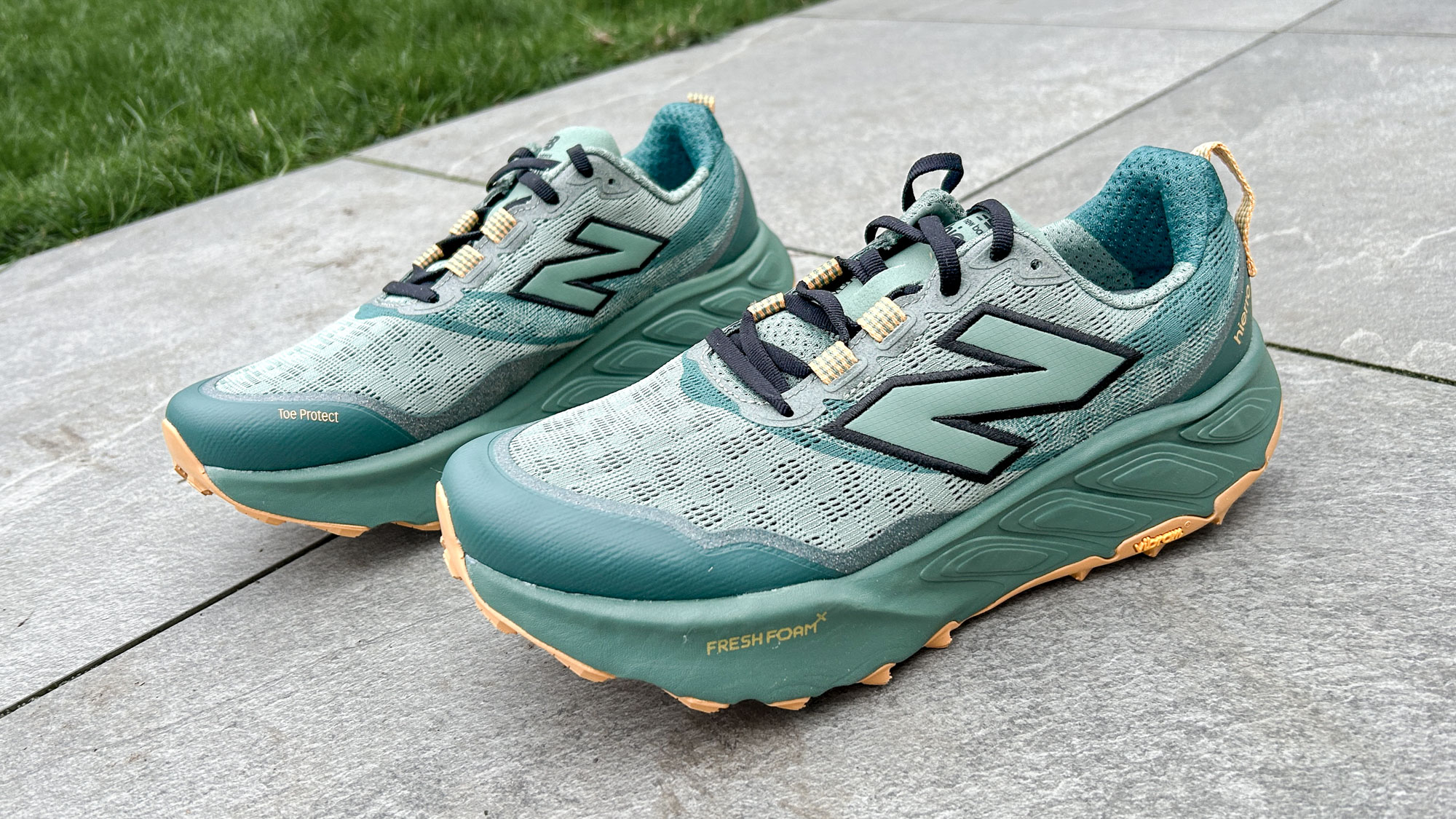
Specifications
Reasons to buy
Reasons to avoid
The New Balance Hierro v9 is a shoe that's equally at home on the road and the trails, with a comfortable design that provides enough cushioning for road running and an outsole that offers reliable grip on a wide variety of surfaces.
Key to its comfort is the high stack of Fresh Foam X cushioning in the midsole. A softer top later delivers a comfortable ride, while a firmer bottom layer helps ensure the Hierro v9 is stable on uneven trails. It's still not the best shoe for technical trails where I'd prefer to be in a nimbler, lower-stack shoe myself, but on more runnable paths and roads it excels.
The outsole has 4.5mm lugs and uses Vibram MegaGrip rubber, and I found it delivered reliable grip on both the road and light trails in all conditions. The lugs are quite broad so as to be comfortable on the road and harder trails, but have enough bite for softer trails as well, and I ran on grass, mud paths, gravel and even icy sidewalks happily in the shoe.
- Read our full New Balance Fresh Foam X Hierro v9 review
Best waterproof trail running shoes
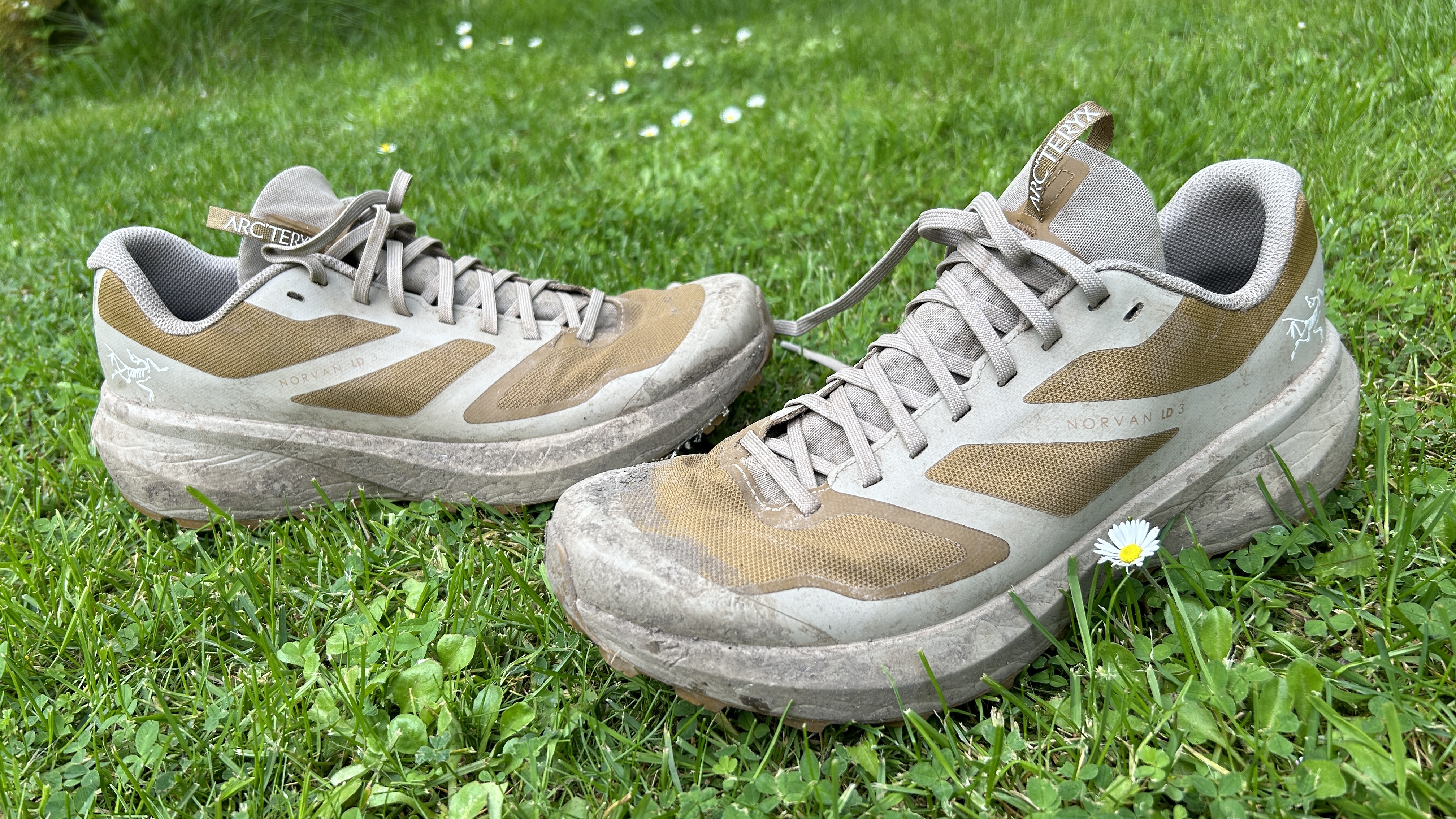
5. Arc’teryx Norvan LD 3 GTX
Specifications
Reasons to buy
Reasons to avoid
It doesn’t come cheap, but the Arc’teryx Norvan LD 3 is worth every cent if you do a lot of long runs in wet and cold conditions. It kept my feet dry and warm on long runs on icy hills in Scotland, even when breaking through ice into freezing puddles — just make sure you don’t run through anything deep enough for the water to get over the collar and inside the shoe, because then the Gore-Tex works against you in blocking drainage.
The InFuse midsole on the shoe is durable and comfortable, and has a little bounce that’s noticeable when you hit flatter, harder trails. The Vibram Megagrip outsole uses 4mm lugs for grip on a variety of trails, including some snowy descents, and aside from when running through deep mud and on icy roads, I had no traction concerns when using the shoe.
If you don’t need the waterproof upper the standard version of the Norvan LD is $35 cheaper and also a great option for long runs on varied trails. It will also be more breathable for runs in hot conditions without the Gore-Tex liner you get on the Norvan LD 3 GTX.
Best trail running shoes for races

6. Adidas Terrex Agravic Speed Ultra
Specifications
Reasons to buy
Reasons to avoid
The Adidas Terrex Agravic Speed Ultra is the first trail shoe to come close to matching the feel of the best carbon plate running shoes for the road. For the most part, this isn’t possible off-road because the unstable, high-stack designs that work on flat roads aren’t suitable for uneven trails.
However, Adidas has thrown caution to the wind with the Speed Ultra, and produced a very rockered and springy shoe that will help you run your fastest over any distance on the trails, with the plastic rods in the midsole acting like a plate in providing extra propulsion while stabilizing the soft Lightstrike Pro foam.
That speed does come at a cost, in that the Speed Ultra is not as stable as other trail shoes, and I did worry about the very narrow heel and midfoot when descending on tricky trails in particular. For most runners it will be a better racing shoe for shorter distances on fairly tame trails as a result, but experienced trail runners will be able to hare up and down mountains and through ultramarathons in the shoe.
While the lugs on the outsole are shallow, the Continental rubber used does stick well to wet rocks and roots in my experience, and while I wouldn’t want to use the shoe for mud runs, the Speed Ultra grips well on any harder ground, and the high stack of foam in the midsole means your feet are protected from jagged rocks.
Best trail running shoes for ultramarathons
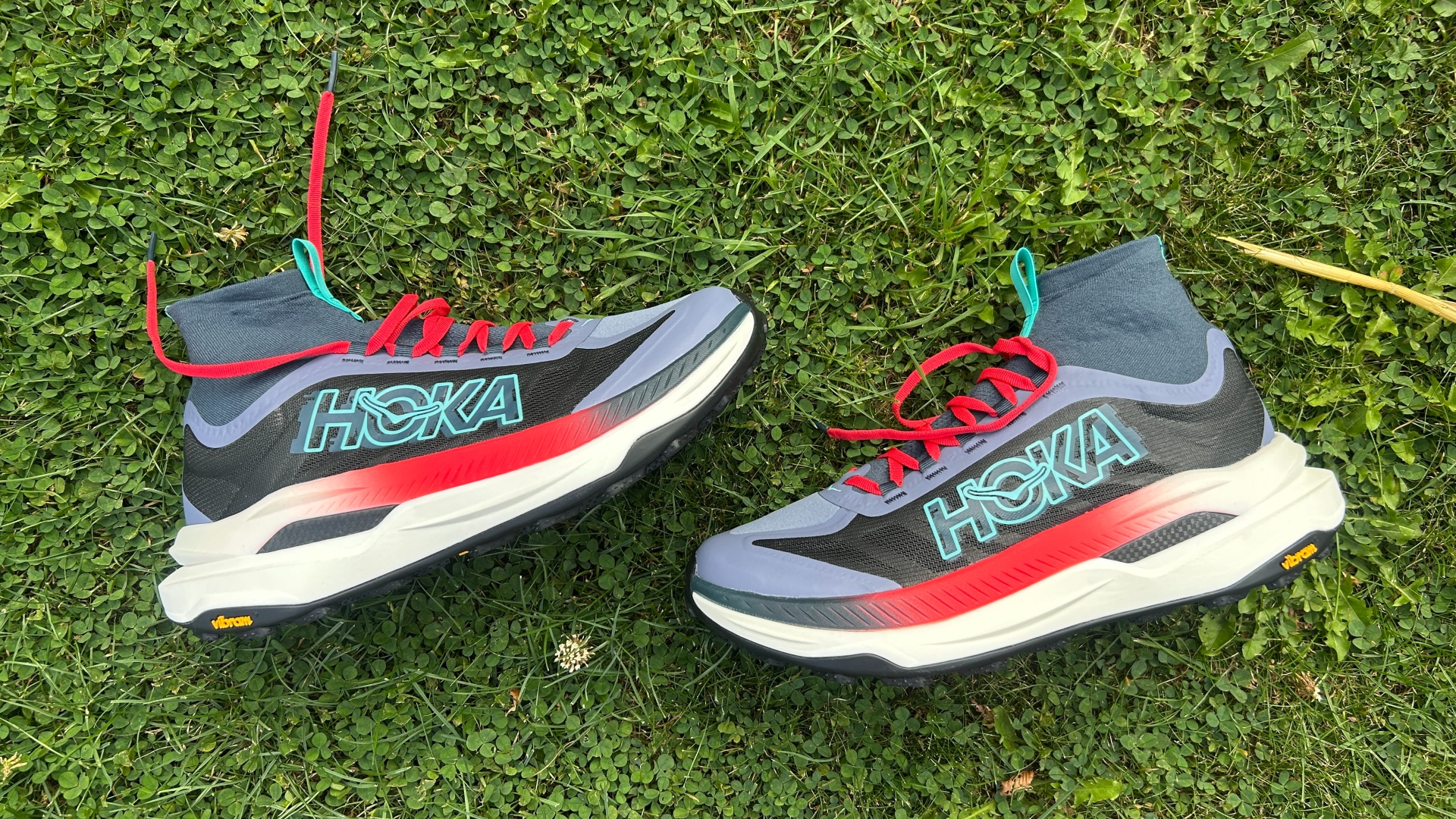
7. Hoka Tecton X3
Specifications
Reasons to buy
Reasons to avoid
The Tecton X3 is the third carbon plate trail-racing shoe Hoka has released, and its best to date by far. That’s down to the new midsole design, which has two layers of the springy PEBA foam found in road racers like the Hoka Cielo X1. This creates a fast and bouncy ride that’s also very protective — I used the Tecton X3 for hilly runs on several days in a row that would usually leave my quads aching and my muscles felt fine.
This protective and fast ride is ideal for ultramarathons in particular, with the Tecton X3 built to keep you moving over exceptionally long distances — Jim Walmsley used a prototype of the shoe to win UTMB in 2023. The 4mm lugs on the outsole also grip well on a variety of terrain, including the road, which is vital in ultramarathons where you might have to move from mountain tops to valley floors.
Running through the midsole are twin carbon plates, which run in parallel down the length of the shoe. By virtue of not having a full plate the Tecton X3 is more flexible and comfortable on uneven terrain, and it still delivers some of the propulsive punch you expect from a plated shoe.
The plates also have winglets on the side to add more stability to the shoe, which is needed with a high midsole stack of quite soft foam. I did find at times that the shoe felt a little wobbly underfoot, especially when tired at the end of long runs, but there’s enough stability there that if you’re careful it shouldn’t be a problem.
At the top of the heel collar is a built-in gaiter that stops debris from getting into the shoe. I found the gaiter comfortable and it felt like it added some extra support through the way it hugged the leg, but some might find it cloying and unnecessary if you’re not on terrain like sand or gravel where the extra protection is useful.
- Read our full Hoka Tecton X3 review
Best trail running shoes for wide feet

8. Altra Experience Wild
Specifications
Reasons to buy
Reasons to avoid
Altra’s range of shoes all have a foot-shaped toe-box, which gives you extra width compared with the tapered fit of most brands. This makes them a great option for runners with wide feet, and the Altra Experience Wild pairs that accommodating fit with an outsole that grips well on a range of off-road terrain, as well as being comfortable for stints on the road. The outsole is not designed for technical mountain trails or deep mud, but coped well with grass, gravel and dirt tracks during our testing.
The Experience Wild is Altra’s first trail shoe to have a heel-to-toe offset — most Altra shoes are zero drop, where the heel and forefoot of the shoe are the same height, but the Experience Wild has a 4mm drop. This makes it more accessible than zero-drop shoes, which can feel uncomfortable and strain the calf muscles if you’ve not used them before, and the Experience Wild could work as a stepping stone towards Altra’s zero-drop shoes if you’re used to running in shoes with a 6-10mm offset.
I enjoyed the rockered ride of the shoe, which is especially noticeable on flatter trails and rolls you onto your toes smoothly. The midsole is not particularly springy, but it is comfortable for long runs and provides a stable base on uneven ground.
One part of the shoe that didn’t work for me was the heel, where padded sections irritated the Achilles tendon a little, especially during long runs. The upper is also not the most protective, with only a minimal toe bumper. If you’re heading for wilder and rockier trails then it might not have enough protection for the top of your foot compared to a shoe like the Hoka Speedgoat 6.
Best trail running shoes for the mud

9. Inov-8 Mudtalon Speed
Specifications
Reasons to buy
Reasons to avoid
The Inov-8 Mudtalon Speed is a shoe that’s designed to be light and nimble while still providing reliable grip on muddy ground. It absolutely excels on both fronts and it’s a go-to shoe for me for racing during cross-country season, and anytime I’m planning to try and run fast through boggy fields or up and down damp and grassy hills.
There are 8mm deep lugs on the outsole, which bite into the deepest of mud, and then shed that mud quickly so you’re not carrying around a load of extra weight on the bottom of the shoe. The upper also drains quickly, which again helps to keep the shoe lightweight over the course of a race.
Inov-8 gives the weights as 9.2oz, but this is an average across all sizes, and my US men’s 10 weighs 9oz, which is very light for a shoe with such deep lugs. The Inov-8 Mudtalon Speed also comes in two widths — precision and wide — with the more dialed-in precision fit being better for those with narrow feet.
The lightweight design is partly down to a fairly low stack of cushioning in the midsole and that, along with the deep lugs, means that the Mudtalon Speed is not ideal for trail runs on rocky or other hard ground, and isn’t the most comfortable option for long runs on any terrain. For short, fast efforts on treacherously soft ground, however, it’s hard to beat.
How to choose the best trail running shoes
The best trail running shoe for you is the one that fits you best, so it’s always a good idea to head to your local running shop to try a couple of different brands before you buy. Another thing to consider before investing in a pair of trail running shoes are the surfaces you plan on running on. If you’re just planning on exploring your local woodlands, you’ll be fine in a shoe with a less dramatic outsole. However, if you’re off on technical trails, you’ll need extra grip to avoid accidents.
You also need to think about are how long you plan on running. If you’re heading to the Marathon des Sables or the UTMB, you’ll want a trail running shoe with a good amount of responsive cushioning to keep you comfortable. On the other hand, if you’re heading from your front door to the trails, you’ll want a shoe that is comfortable on the concrete, as well as off-road.
How we test the best trail running shoes
I test trail running shoes by running in them. All of the shoes on this list have been put through their paces with several runs on a variety of terrains and in all weathers. I’ve run at least 35 miles in each shoe, either in my local forest, which tends to get very muddy for most of the year, or on trips to more dramatic and mountainous terrain.
FAQs
Which brand is best for trail-running shoes?
Every major running brand has trail-running shoes in its line-up, and while some tend to specialize more in off-road shoes, like Salomon and Merrell, there's no one brand that stands out as the best overall as you can see from the variety of companies that have made it into the picks above.
What are the best running shoes for road and trail?
You have two options if you want one running shoe to tackle both road and off-road runs. You can get one of the best running shoes for the road that has a particularly thick and grippy outsole, like the Puma Velocity Nitro 3, or you can get a dedicated road-to-trail shoe.
These are a type of trail-running shoe that has broader, flatter lugs on its outsole to ensure it grips well and is comfortable on flat roads while offering a bit more grip on the trails. Our top pick in this area right now is the Hoka Challenger 7, which is comfortable on both road and trail.
Just be aware that road-to-trail shoes are generally designed for less technical trails, so they wouldn't be our choice for running in deep mud or up and down mountains, when you will want a more specialized trail shoe.
Is it OK to wear trail running shoes on the road?
Yes, there's no reason why you can't wear your trail running shoes on the road. That said, keep in mind trail running shoes aren't designed to be worn on concrete, so might not have as much midsole foam to protect you from the harder surface. The outsole will also be designed for gripping onto mud or light trails, so might actually have less grip on the pavements than road running shoes.
Can you wear trail running shoes for hiking?
Trail running shoes have less support than hiking shoes or boots, but they are still comfortable for walking and hiking, especially if you're planning to move fast even if you're not running. Many trail shoes are used for long stretches of walking during ultramarathons, especially on uphills, so they are designed to be able to handle that.
The best trail running shoes for hiking will avoid a pronounced rocker shape and will ideally have added structure and support around the heel. If you're planning to use them for hiking then broader, shallower lugs will usually be best, because the very long studs you get on trail running shoes for the mud aren't comfortable for walking on harder surfaces.
Get instant access to breaking news, the hottest reviews, great deals and helpful tips.

Nick Harris-Fry is an experienced health and fitness journalist, writing professionally since 2012. He spent nine years working on the Coach magazine and website before moving to the fitness team at Tom’s Guide in 2024. Nick is a keen runner and also the founder of YouTube channel The Run Testers, which specialises in reviewing running shoes, watches, headphones and other gear.
Nick ran his first marathon in 2016 and became obsessed with the sport. He now has PBs of 2hr 25min for the marathon and 15min 30sec for 5K. Nick is also a qualified Run Leader in the UK.
Nick is an established expert in the fitness area and along with writing for many publications, including Live Science, Expert Reviews, Wareable, Coach and Get Sweat Go, he has been quoted on The Guardian and The Independent.
- James FrewBuying Guide Editor
- Jane McGuireFitness editor
- TJ FinkContributing Editor
